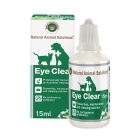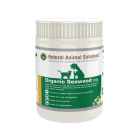
Hypothyroidism
Hypothyroid disease, or hypothyroidism, is a deficiency in the thyroid hormone, thyroxin. Thyroxin is a hormone used by your pet’s body to determine how quickly your pet can burn fuel and make energy. Since every cell of the body needs to be capable of burning energy, thyroid diseases affect every cell. Animals suffering from hypothyroidism tend to become listless and to develop dry, smelly skin. In addition, your pet’s hair may fall out and it may begin to gain weight. Another unfortunate side effect is that your pet may begin to become slow thinking and less aware.
Hypothyroidism is the most common disease of the endocrine system in dogs. Somewhere between 1 in 150 and 1 in 500 canines develop the problem. The disease is, however, rare in cats. Since hypothyroidism is treatable, it is important to recognize the signs and symptoms and to see the vet as soon as possible. Otherwise, long term damage can occur to your beloved pet.

Hyperthyroidism
Hyperthyroid disease, or hyperthyroidism, is disease characterized by the thyroid producing too much thyroxin. Pets with hyperthyroidism tend to get very thin, despite the fact that they eat heartily. The loss of weight is caused by the fact that your pet’s thyroid is working too efficiently and, as a result, is burning energy off too quickly. Other signs of hyperthyroidism include nervous behavior, irritability, rapid heart rate, and high blood pressure. The heart of an animal with hyperthyroidism may increase and result in a condition called myocardial hypertrophy. Over time, the otherwise healthy heart will wear out because of the extra work it takes to pump blood through it.
Medical researchers are not sure what causes hyperthyroidism. In addition, there has recently been an increase in the number of cats diagnosed with the disease, particularly in older cats. Some believe this is from chemicals contained in the plastic liners in canned cat food. For dogs, the link to hyperthyroidisms seems to be thyroid cancer, by the disease is still relatively rare in dogs.




